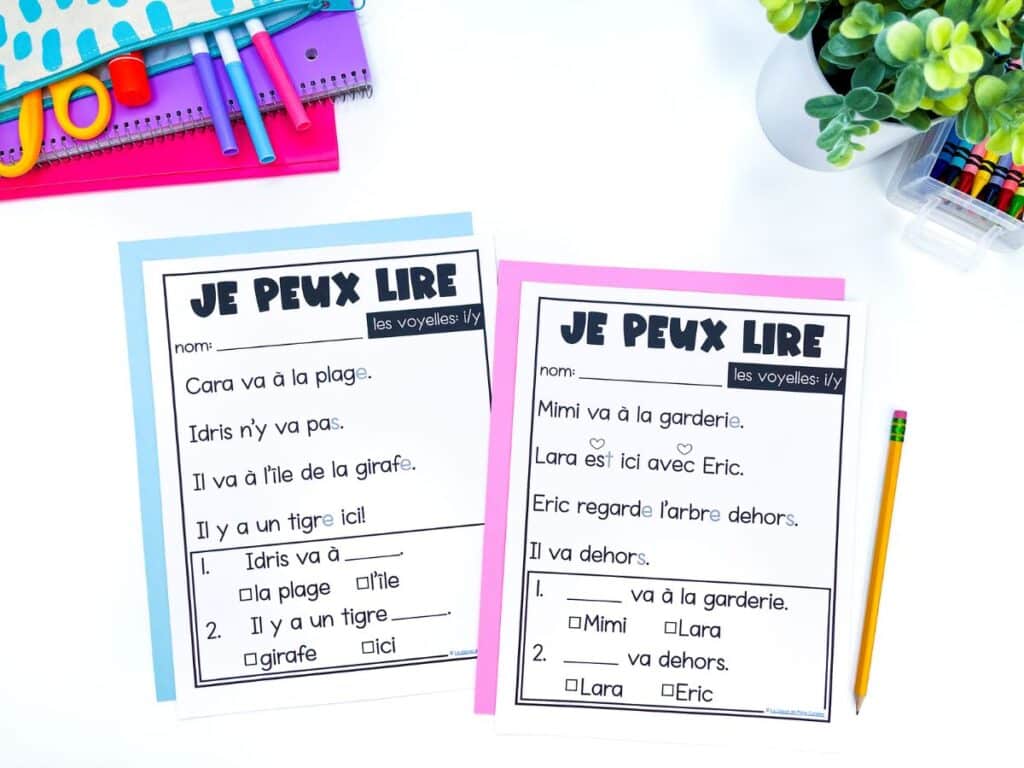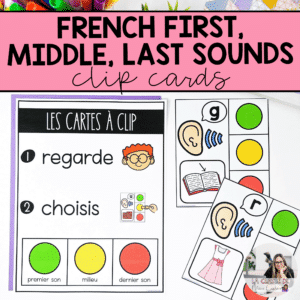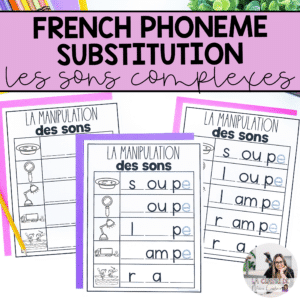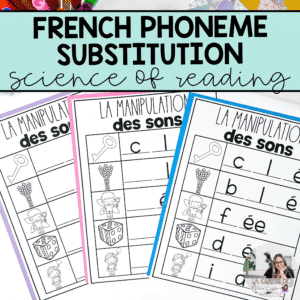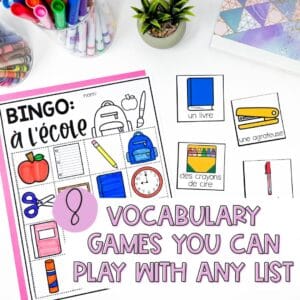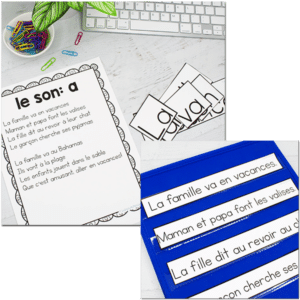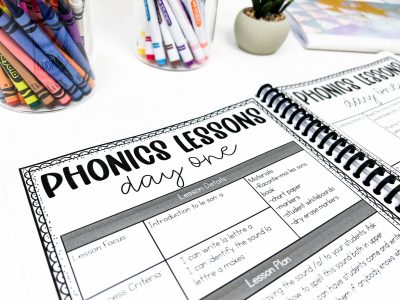If you’ve been looking French phonological awareness activities, you’ve come to the right place! When you’re planning your small group phonics instruction, it’s easy to feel like you’re running out of ideas. I want to pass along some of my favourite activities for French literacy centres so you can explicitly teach French phonological awareness while also having fun.
This post may contain affiliate links. Read my disclosure policy.
Activity #1: Phoneme Counting
Have students place their hands on their chest and count the number of phonemes they hear in various words. You’ll need to model and practice this a few times first, but students will get the hang of it!
This literacy centre idea is great for isolating sounds, which is the skill they’ll need to master in order to manipulate phonemes. Once they master phoneme counting, you can move on to phoneme identification. This skill can be transferred into writing as well since students can learn to spell a word by isolating all the sounds they hear.

Activity #2: Phoneme Identification
For this French phonological awareness activity, students will identify where a specific sound is within a word. For example, where is /c/ in this word? Once students can identify the sound, they will move to identifying where the sound is located: the first, medial, or last sound.
Are you looking for an activity to reinforce first, medial, and last sounds? Try this French Clip Cards activity! It includes 50 task cards and can be used for your French literacy centres.
Activity #3: Phoneme Manipulation
Once they’ve mastered that French phonological awareness skill, students will move to phoneme manipulation. The first skill they’ll work on is phoneme addition. This skill requires students to add a sound to a word to make a new word. For example: say aime, add /er/ at the end and it becomes aimer.
Next up is phoneme subtraction, which is the opposite of phoneme addition. This French phonological awareness skill requires students to remove a sound from a word to make a new word. For example: say neuf, then remove the /n/ at the beginning. What’s the word? Oeuf.
Finally when they’ve mastered those two skill, they’ll work on the hardest one – phoneme substitution. For this skill, students will remove a sound from a word and change it to another to create a new word. For example, you can have your students change /a/ in balle to /u/ to make the word bulle.
Activity #4: Decodable Readers
Decodable readers are an important literacy tool because they contain only the sounds students know. Unlike levelled readers, they’re not full of unfamiliar French compound sounds. In your classroom, students will likely be using different decodable readers since they are based on individual knowledge. A book with only vowels and consonants might be a decodable reader for one kid and a book with some compound sounds might be considered decodable for another reader.
My decodable reading passages and comprehension questions are a great tool for literacy centres! They focus on vowel sounds and contain some heart words, but students should be able to read them independently.
Activity #5: Orthographic Mapping
Orthographic mapping sets the necessary foundation for reading and writing. With Orthographic mapping, students become familiar with letter combinations and their sounds. Familiarity with various sounds makes it easier for students to read new words and spell words correctly.
One fun way to practice these patterns and sounds is with Pop Its. Students press down a bubble to count the sounds in the word or sentence. You can use other hands-on materials like playdough, balls, or manipulatives like snap cubes to help students count phonemes.
Want to try orthographic mapping with your students? Grab the free mapping resource! This freebie includes four mapping pages. Pull out your manipulatives and turn this into a hands-on literacy centre.
Want to check out the resources listed?
All the links above lead to TPT, but the resources are also available on our website. Here are the resources available here for purchase in CAD. Don’t forget you can also buy credits for an additional discount (up to $15 off).
Want to Learn More About French Phonological Awareness Activities?
When looking for French literacy centre ideas, it’s important to find activities that will work for your particular students. If you want to learn more about other literacy activities, I recommend checking out my Science of Reading blog posts!




